A tea-candle lamp on the newly renovated gravesite of Richard Burton in Céligny’s Old Cemetery. Handwritten on both sides are excerpts from Welsh poet Dylan Thomas’s poem “Do not go gentle into that good night”.
I GREW up in a movie-loving family, with a fondness for the classics — dramas, musicals, romances, almost anything — of the 30s, 40s and 50s.
By the time the 70s rolled around and I was old enough to process newspaper headlines, many of the famous thespians from those great Hollywood eras were receding from public view.
But not Richard Burton, whose star had risen on stage in the 50s and then on screen in the 60s due in great part to his prodigious talent, but also to his on-again-off-again relationship with Elizabeth Taylor, the second and third of his four wives.
By then they’d been the most famous celebrity couple in the world for over a decade and their notoriety showed no signs of dimming in either the mainstream or entertainment press.
Star power in Vaud
When I moved to Vaud in 2003, I gleaned as a movie lover is apt to do that some of cinema’s brightest stars had called this Swiss canton home, including Audrey Hepburn in Tolochenaz, tucked just outside Morges and Peter Ustinov in Bursins, on the hillside above Rolle.
And then there was Richard Burton. I’d read that he lived the last year of his life in the tiny community of Céligny, a ten-minute drive away, and he’d been buried in the cemetery there after his sudden death from a cerebral haemorrhage in 1984. I assumed his property had been a late-life purchase.
Of course I’d try to find his final resting place.
Içi égalité … but not what I’m looking for
It took some asking after checking out the new cemetery whose stone archway bears the inscription “Içi égalité” (Here, Equality) and finding no trace of the man.
It was just a little further, in the old cemetery, reached by walking along an earthen path and down a short slope to the edge of a shallow ravine with a lively stream running through it.

To the right, creaky, grey metal doors opened up onto a long, secluded stretch of ground dotted with headstones on either side, many askew and moss-covered and at its furthest end, some entirely overgrown, their inscriptions worn and unintelligible.
But not Richard Burton’s. Although it was showing some wear and tear there were hints he hadn’t been forgotten: the Welsh football scarf that lay at the foot of the headstone, the potted flowers, the red votive lamps, the small mementos.
The imposing, craggy headstone and simple epitaph befitted a man born in a coal mining town in Wales. And the isolation – the solitude, other than birdsong, the rushing brook, and occasional wind in the overhanging trees seemed the ideal resting place for a man who I imagined would have been satisfied to finally find peace after such a tumultuous public life.
And that’s that … or is it?
I’d read in an old newspaper article that one day, after lunching at his favourite restaurant at the foot of a hill opposite Céligny’s old railway station, Burton had had a minor car accident in the village square.
Given the square sits at the top of the hill, I assumed his home must be in this upper section of town rather than at the base of the hill, near the restaurant.
When I occasionally cycled or walked through the upper village, I kept my eyes open for some discerning detail, but not wanting to pry, I left it at that. And given the ongoing modernisation of the surrounding area in recent years I thought the home may have been torn down.
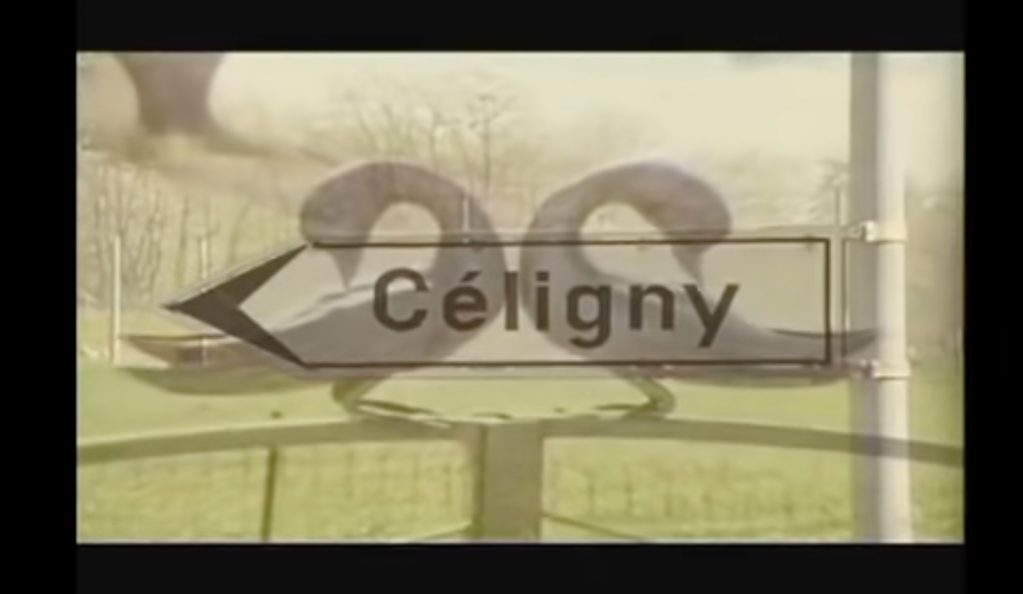
Curiosity renewed
Then last month a 1988 documentary entitled In From the Cold: The World of Richard Burton appeared on Netflix Switzerland (it’s also available on YouTube) and totally reconfigured my understanding of his relationship to Céligny.
I learned his home wasn’t a late-life purchase, but one he’d made in the late 1950s together with his first wife, Sybil and they’d lived there with their two toddler daughters until his affair with Elizabeth Taylor ended the relationship.
Footage showed him standing under a black-and-white Céligny street sign. It took us inside the upper floor of his house where he’d installed heavy swinging bookshelves to hold his beloved collection of books.
It showed the beautiful orchard next to his house and the long winding driveway to its front door in the distance.
And it revealed front gates adorned with two birds neck-to-neck, and also the property’s name spelled in wrought iron on one of two front pillars: Le Pays de Galles — Wales in English.
Clearly his Céligny home had meant more to him than just a tax haven. It had been his refuge and delight for almost 30 years. It had been his little piece of Wales in Switzerland.
Did it still exist, I wondered? Would it be recognisable?
A misconception cleared up
I took my bike and cycled round the upper part of the village. One property looked similar from the end of a long driveway but was without the front gate and pillars and had no orchard.
I dug a little deeper online and found another old article that said locals had been concerned for Burton’s safety when he’d walk across the railway tracks to get home after eating lunch at his beloved Buffet de la Gare de Céligny.
The tracks were below the restaurant at the foot of the hill. Misconception cleared up, I knew where to look anew.

One more try…
I cycled beneath the overpass on which the train tracks were built, took a sharp right turn, noting a black-and-white street sign for Céligny at my left. I cycled past farms and down little lanes to the end of the village before it became neighbouring Founex. I circled part-way back and nothing looked familiar. Enough energy spent. One more swing back and I’d head home.
As I re-approached the restaurant I noticed someone crouched before some gates taking photographs. A van was parked in the nook of a driveway nearby.
Someone had been on the search just as I had been and had arrived moments before me. But they’d had an advantage.
No matter, for there were the wrought iron gates with the birds, the winding driveway, the house in the distance with the orchard alongside. It was touching to see the property’s name had been maintained — Le Pays de Galles.
Although I have no personal connection to it, I was glad to see it being appreciated and lovingly maintained.
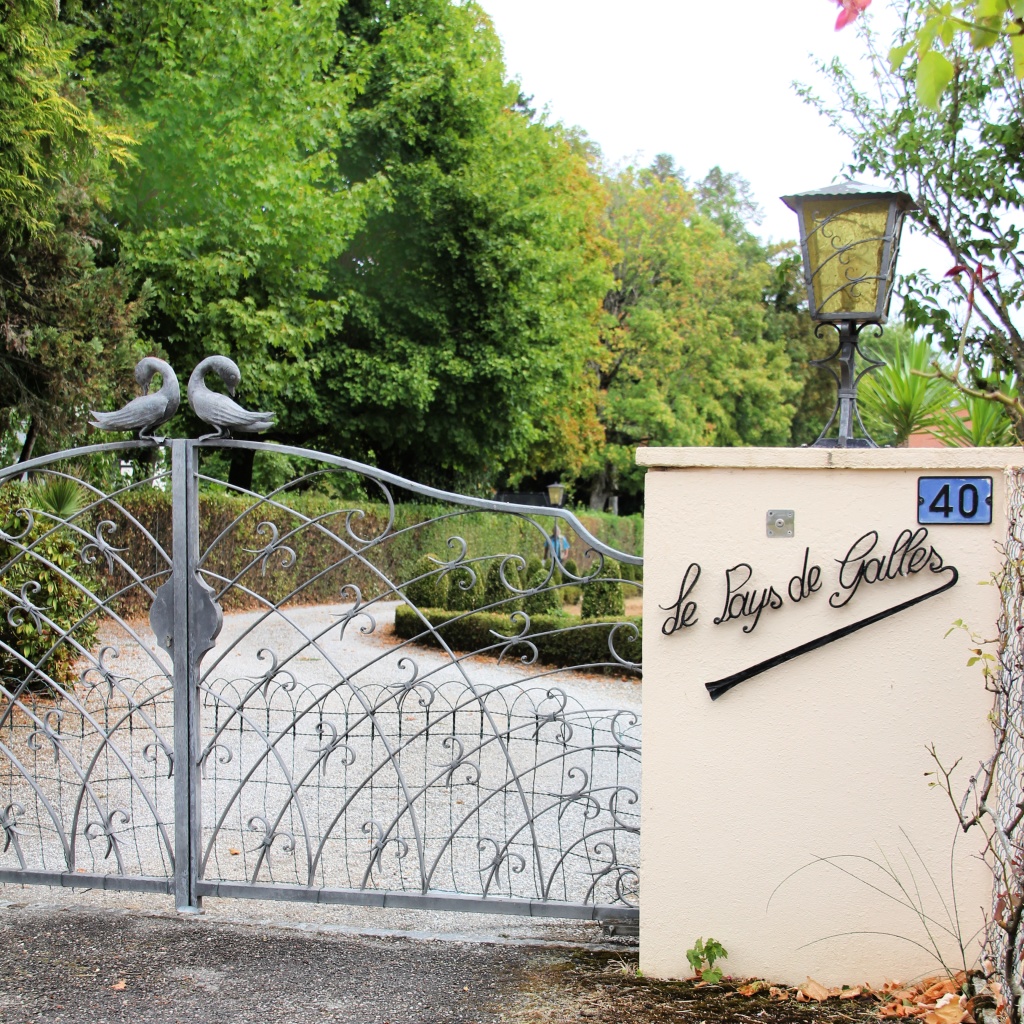
In the news
The advantage the photographer, and the journalist who exited from the van, had over me was that they’d been given the address by Philip Jennings, an accomplished Welshman in his own right who lived not far away in Chéserex. They were there to post the latest update on a story that had been making headlines for weeks both locally and in UK.
It all started on 27 June when Jennings read in the local newspaper La Côte that Burton’s grave had “lost its lustre”. Finding this unacceptable, Jennings, together with his wife and mother, undertook to clean and restore it and add touches reminiscent of Burton’s Welsh heritage.
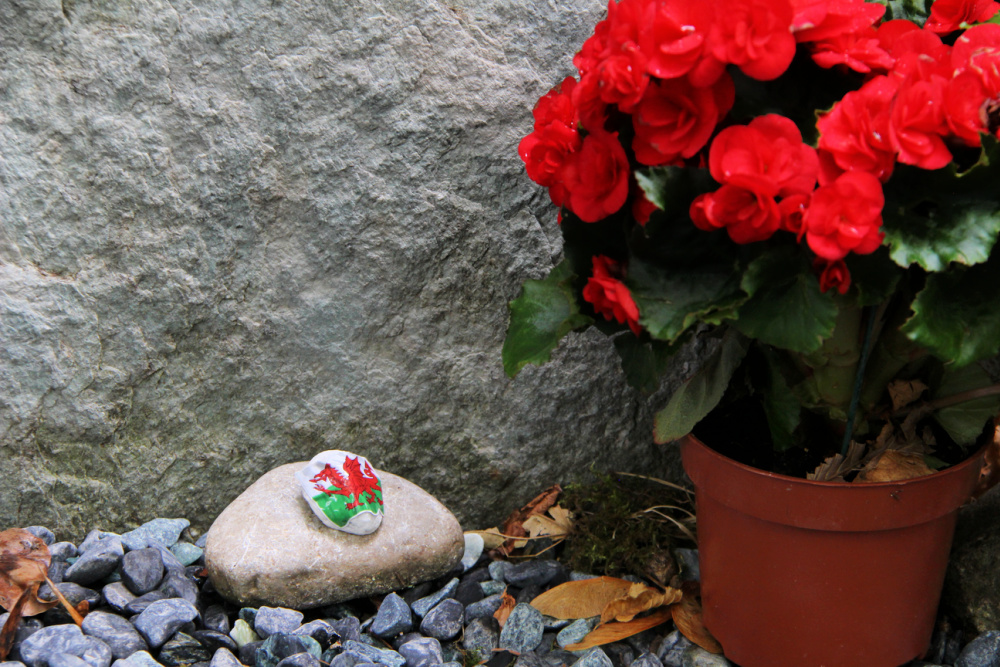
“Philip Jennings gives second life to the tomb of Richard Burton” La Côte reported on 8 July. “The adventures of Richard Burton’s tomb taken over across the Channel” read another of its headlines on the 13th, after the story had been picked up by BBC on the 10th. That same day Wales Online ran with “Welsh family completely restore Richard Burton’s overgrown and neglected grave in Switzerland”. On the 14th: “Burton and Jennings make headlines” reported La Côte. On the 18th, the Tribune de Genève took up the story. And finally on the 19th, the local paper wrapped things up on a happy note with: “The family of Richard Burton comes forward”.
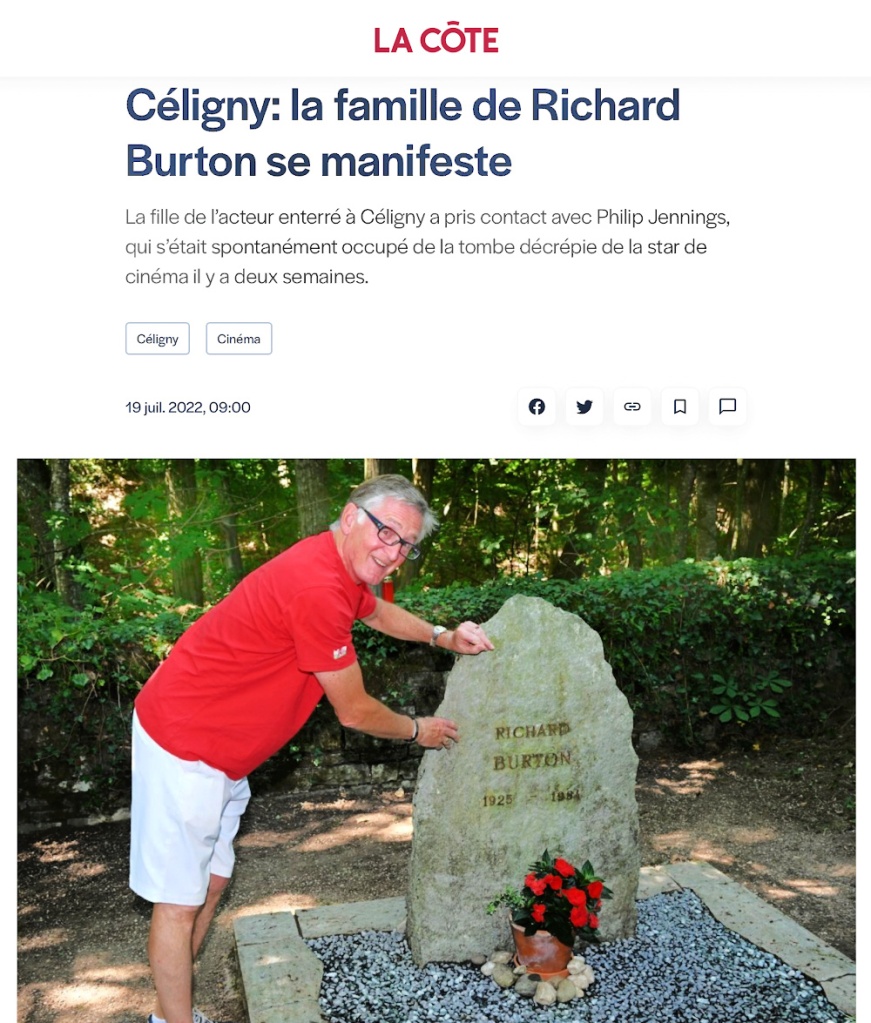
Family connection
It reported the actor’s eldest daughter, actress Kate Burton, had contacted Philip Jennings, was grateful for his efforts, and that the two would meet at a literary festival in UK in the autumn.
“‘We are Welsh and can’t tolerate a situation where Richard Burton has been forgotten about and his grave stone has been neglected,” Jennings told Wales Online. The renovation, he said: “has been a bit of a talking point in the area. I’ve had calls, texts, and emails from people I’ve never met saying thank you – it seems to have given people a bit of a lift.”

He’s one of us
Jennings has promised to take care of the gravesite now, which had been left untended since 2019 when Richard Burton’s gardener and close friend passed away at 91. Jennings and his family don’t consider it a bother.
As his mother, Maureen, told the Welsh media outlet: “we’ve done a bit of work for Richard Burton – he’s a Welsh boy and he deserves it. It’s fantastic seeing it now – I feel proud of it and I think if everyone in Wales could see it now they would be oh so proud. He’s one of us.”
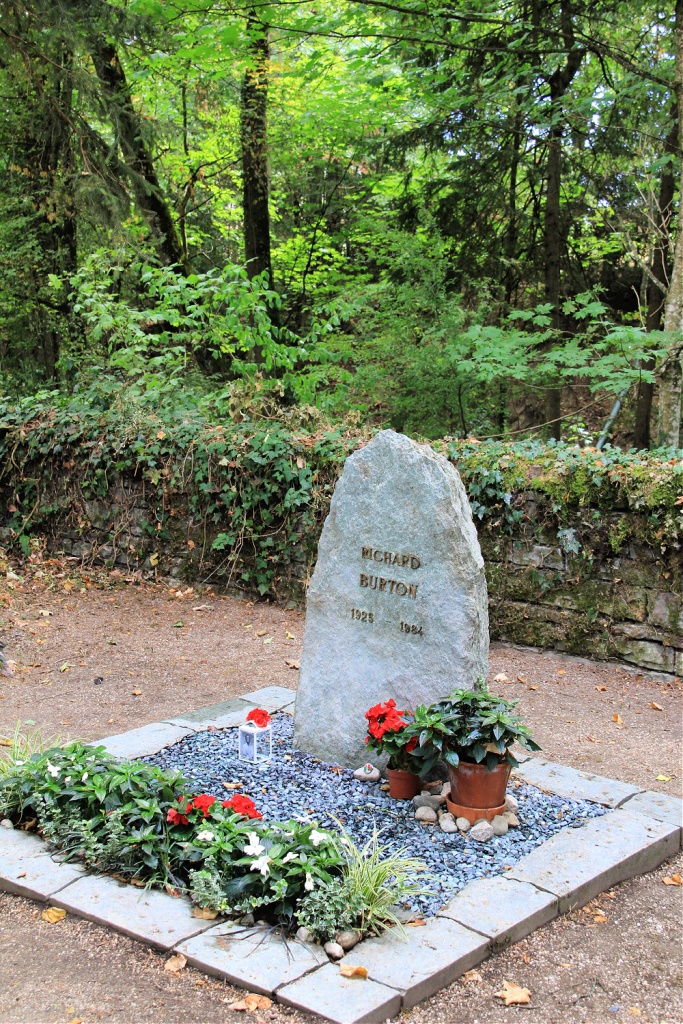

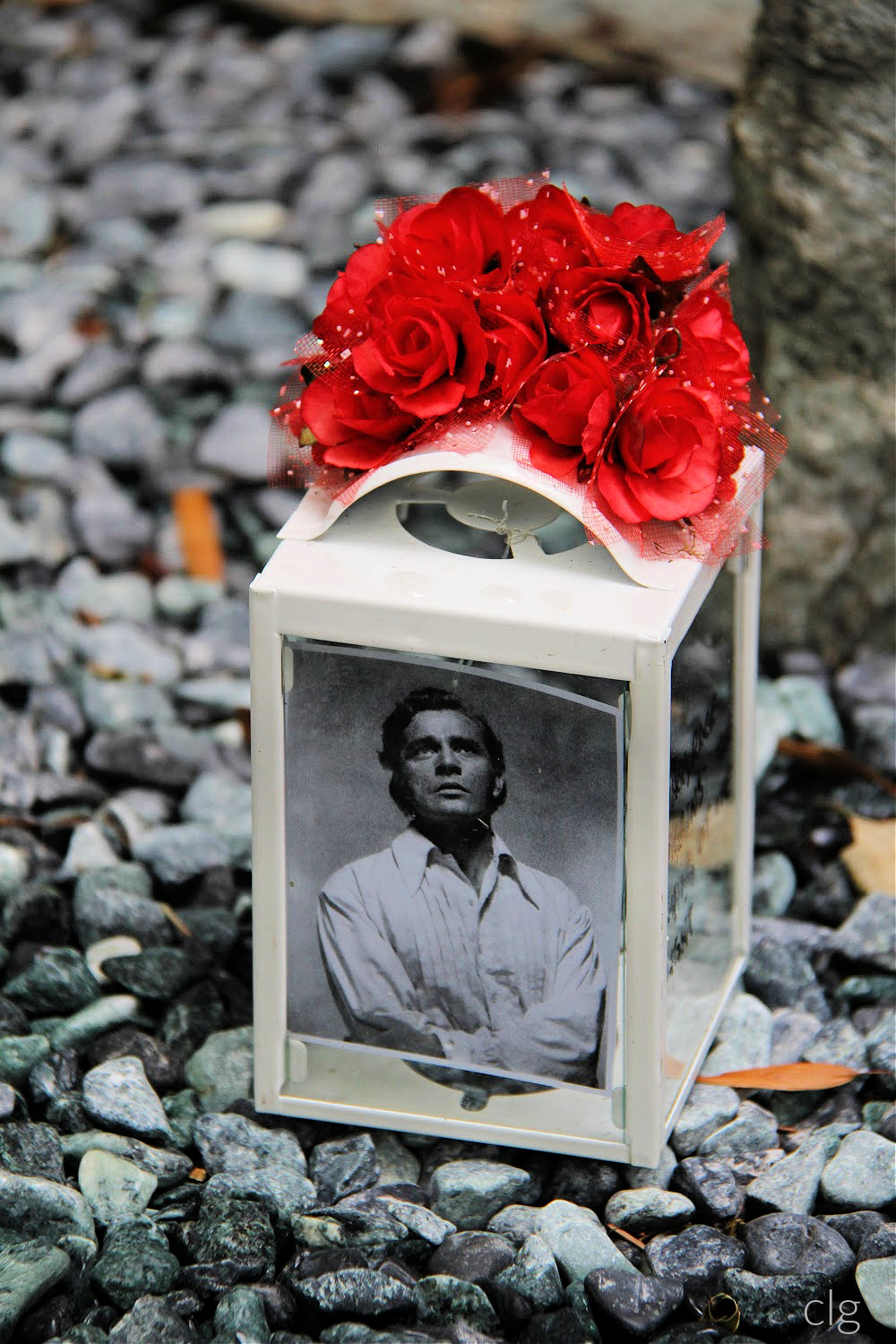
25 responses to “Finding Richard Burton’s Wales in Céligny”
Very interesting, Elena! Going to have to go there now to get a pic for my mother in law – massive Burton fan. Hope all well with you and yours. Melissa x
LikeLike
Thanks, Melissa. It does tug at the heartstrings a little. Your mother-in-law will be grateful for your going! Hope all’s well with you and yours, too. Elena x
LikeLike
What an increadibly good, noteworthy and caring post Elena, thank you so much
LikeLike
Thank you, Rachel, I’m so glad you think so!
LikeLike
Such a wonderful article, Elena! I remember going there on a hike you led. Nice to see the gravesite spiffed up! Hope you all are well! xx
LikeLike
Thanks so much, Leigh Ann, I’m glad it brings back nice memories of our hike. Sorry I missed your visit this summer but next time you come we’ll do this hike together again. All well here and hope with you, too! xo
LikeLike
Enjoyable article. Thank you. My wife’s from Celigny and attended his burial. Liz Taylor was not there but she showed up a few nights later, in the dark, to visit his grave. A sharp Scottish photographer friend of mine, Kenny Lennox, had guessed she would show up and he had “staked out” the old cemetery. When she appeared, having walked down a path from her car, he did not take pictures. He asked her respectfully if he could. “Just give me a little while alone with Richard, then I’ll turn to you and you can shoot.” He did so, and his photos appeared around the world. He rests in peace.
One thing: The house is not called Pays de Gaulle. De Gaulle was the French resistance hero and later president. It’s Pays de Galles, French for “Wales.” Phil Davison, Richmond upon Thames.
LikeLike
Thank you for your comment and the correction! Indeed, it should read ‘de Galles’, not ‘de Gaulle’ (duly corrected) and a photo newly added to prove your point. It must have been an intense experience at the funeral as the documentary showed there was barely room to move. I had heard that a clever photographer had caught Liz Taylor when she went to visit the gravesite and now I know who it was, and a friend of yours as well! Thank you for sharing your insider knowledge, and I’m glad you enjoyed the article. Elena
LikeLike
I live near to the village of Pontrhydyfen, South Wales birth place and the home of Richard Burton.
I’ve visited Richard’s grave on several occasions, most recently on the 27th July 2023 – it was good to see it looking maintained and cared for.
I have the good fortune of knowing a friend of the owner of “Le Pays de Galles” and had the great privilege of having a beer there – we raised a glass to our fellow countryman and went for dinner that evening in Buffet de la Gare !
Thank you Mr Jennings for taking care of the grave of a Welsh great !
LikeLike
What a wonderful experience, I’m so glad that you had a chance to visit Le Pays de Galles and have dinner at the Buffet! I agree it’s lovely to see the gravesite looking so well cared for, it’s a very special place.
LikeLike
Ps. The old cemetery at Celigny is also the final resting place of Alistair MacLean novelist of many books including “Where Eagles Dare” which stared Richard Burton – how ironic that they should both end up in this little isolated cemetery in Celigny !
LikeLike
I’ve often wondered if they agreed to be buried in the same place as otherwise, how could they both end up in the same lovely, but somewhat obscure small cemetery? It’s an intriguing little mystery and hopefully one day someone can offer insight into how it came about (unless, of course, it’s just a remarkable coincidence).
LikeLike
My wife is from Céligny. She “knew” Richard since he would eat and drink in the Café de la Gare. She was there during his funeral and some of the world media used her home telephone (pre-mobiles). Whenever there, we always visited the grave because it was part of our usual walk. I hope you can read this.
LikeLike
For an article I wrote about Richard and Céligny, google “phil davison out of switzerland”
LikeLike
Having visited the cemetery in 2019 it was wonderful to go back this summer and see the grave wonderfully restored to its former glory.I know Richard was proud of his welsh roots and loved watching Aberavon RFC in Port Talbot.I left my favourite Aberavon shirt on his grave and shed a tear at the pride I still feel that Richard was one of us.
Full credit to Mr Jennings and family for their fantastic work on the grave,every credit to them all it looks amazing.
When I return next it’ll be to plant daffodils near the cemetery so they can bloom and remind everyone that a giant of Hollywood and Pontrydyfen lies sleeping only a few feet away.
Lez Thomas from North Cornelly
LikeLike
What a lovely thing to do, Lez. I’m sure that Richard would really enjoy having your Aberavon shirt, and lovely daffodils, nearby. Wonderful memories of his ‘first and always’ Wales. Thanks for stopping by and leaving a message.
LikeLike
Thanks Elena,I can totally understand why Richard picked this particular village in Switzerland,stunning doesn’t do it justice.We stopped off for fillet steak in his favourite restaurant and even found his house,it’s a superb place to visit and one I’d thoroughly recommend to all Richard Burton fans.
We’ll definitely be returning.
LikeLike
Glad to hear you like it so much and will return. I agree, Celigny is very charming! If you’re interested, in summer, there’s a little restaurant (a hut really) with what looks like good food and drink down on the lake at Celigny beach. Maybe next time you’re around, you might want to check it out (and let me know what you think about it) Apparently Richard took his daughters to swim in the lake there.
LikeLike
When I go back I’ll definitely add it to the list.It’s funny but Richard Burton makes me feel alive and being in Celigny is like a pilgrimage for me being from the same place as him.
LikeLike
What a great story!!! Very positive & uplifting to see this, especially as being a tremendous burton enthusiast myself! The man is a pure legend & a sheer power house of brilliance! Cheers! 🍻
LikeLike
I’m so glad you enjoyed the story and found it uplifting. It’s great fun to know that someone of such considerable talent and renown loved this little corner of the world and called it home!
LikeLike
What a lovely story. I just watch Richard Burton’s speech at a Party 1983 for Frank Sinatra. I think it was in Hollywood. It is on You Tube, and after one Year Richard past away. So sad.
LikeLike
I’m very glad you enjoyed the story, Aurelia. Thank you for pointing out the YouTube video, which for those who are interested in checking it out is called: “RICHARD BURTON SPEECHS TO FRANK SINATRA 1983” (not my typo 🙂 ).
LikeLike
A very pleasant and well-documented article.
My wife’s family used to own the house just next to Richard Burton’s in Celigny, at number 42. Richard was a regular at the café by the station. A simple man in many ways.
If you haven’t read it, I encourage you to read his biography by Michael Munn, “Prince of Players”, a fascinating read.
It’s heartening to see that his headstone is still well maintained.
Thank you for posting.
LikeLike
I’m glad you enjoyed the article. I’ll look up the book you recommend-thanks for the tip and for leaving a comment!
LikeLike